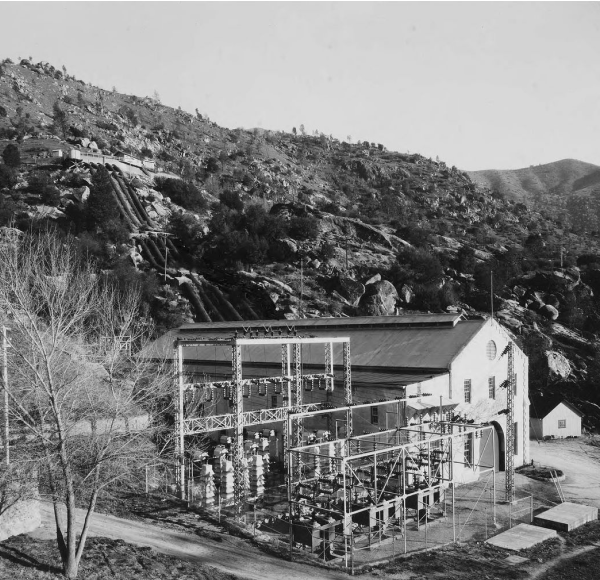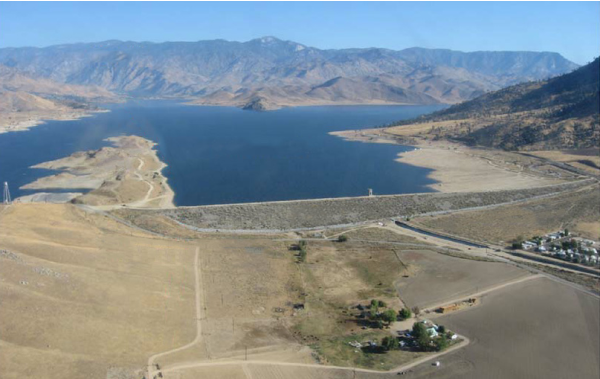Borel Hydroelectric Project (FERC No. 382)


The Borel Hydroelectric Project (Borel Project) was licensed in 1925 by the agency responsible for hydroelectric projects at that time — the Federal Power Commission. Today the responsible agency is the Federal Energy Regulatory Commission (FERC). The Borel Project, located on the Kern River, covers approximately 189 acres of federal land and 23 acres of privately held land.
When it was licensed in 1925, the Borel Project was designed as a “Run of River” hydroelectric project which means the natural flow and elevation drop of a river are used to generate electricity. For Borel, water was taken from either the Kern River’s north fork or more recently, at the Lake Isabella Auxiliary Dam depending upon the water level of Lake Isabella. Water then travelled through the 11.2 mile-long Borel Canal and into the Borel Powerhouse where 11 MW of power was steadily generated. The Borel Project has five primary facilities:

1928—Borel Powerhouse (detail of original image)
02 - 15155, Southern California Edison Photographs and Negatives, The Huntington Library, San Marino, California.
In 1950, the United States Department of Defense, Army Corps of Engineers (Corps) built and now operates for flood protection the Lake Isabella Dam, Auxiliary Dam and Reservoir. Lake Isabella regularly inundates the Borel diversion and the uppermost 4.2 miles of the Borel Canal. Therefore, SCE made alterations to the Borel Canal and constructed an intake structure at the Auxiliary Dam to allow water to pass from Lake Isabella to the lower seven miles of canal leading to Borel powerhouse.
In 2006, the Corps began a dam safety modification study and determined that the dam didn’t meet earthquake safety standards.
In 2017, the Corps began seismic safety modifications to the Auxiliary Dam which resulted in the condemnation of SCE’s canal conduit through the dam. The conduit through the dam was abandoned in place by filling it with concrete and rendering the Project nonfunctional.

In order to proceed with the decommission, SCE must first file an Application to Surrender their current license with FERC.
Decommissioning the Borel Project means that SCE will deconstruct, dismantle, or abandon project features and restore lands associated with the project, in consultation with Stakeholders.
Address potential public safety risks associated with the project facilities
Remediate any environmental, cultural, tribal, historic and socio-economic impacts associated with the existing project
Restore public and private project lands to a satisfactory condition
Remove land easements and right of ways associated with project roads and facilities
There are a variety disposition options for consideration — all will evaluate the type of facility, safety concerns, environmental and cultural resources, environmental impacts during construction and long-term management/maintenance.
Abandon in place
Abandon in place with modification
Demolish, bury in place
Demolish, haul off site
The Surrender Application process will take at least two years. The FERC approval process could take up to five years or more to complete once SCE files the Application. At that point, decommissioning may begin. To review a more detailed schedule of the overall surrender and decommissioning process go here.
The Borel hydroelectric facility was built in the early 1900s to provide power for the Red Electric Streetcar transportation system that Henry E. Huntington was rapidly growing in Los Angeles. Huntington and his business partner Antoine Borel were able to complete facility construction in 1904 and use transmission lines to move power from Kern County to Los Angeles. Look through the pictures below to learn more about the Borel Hydroelectric Project and Facility.